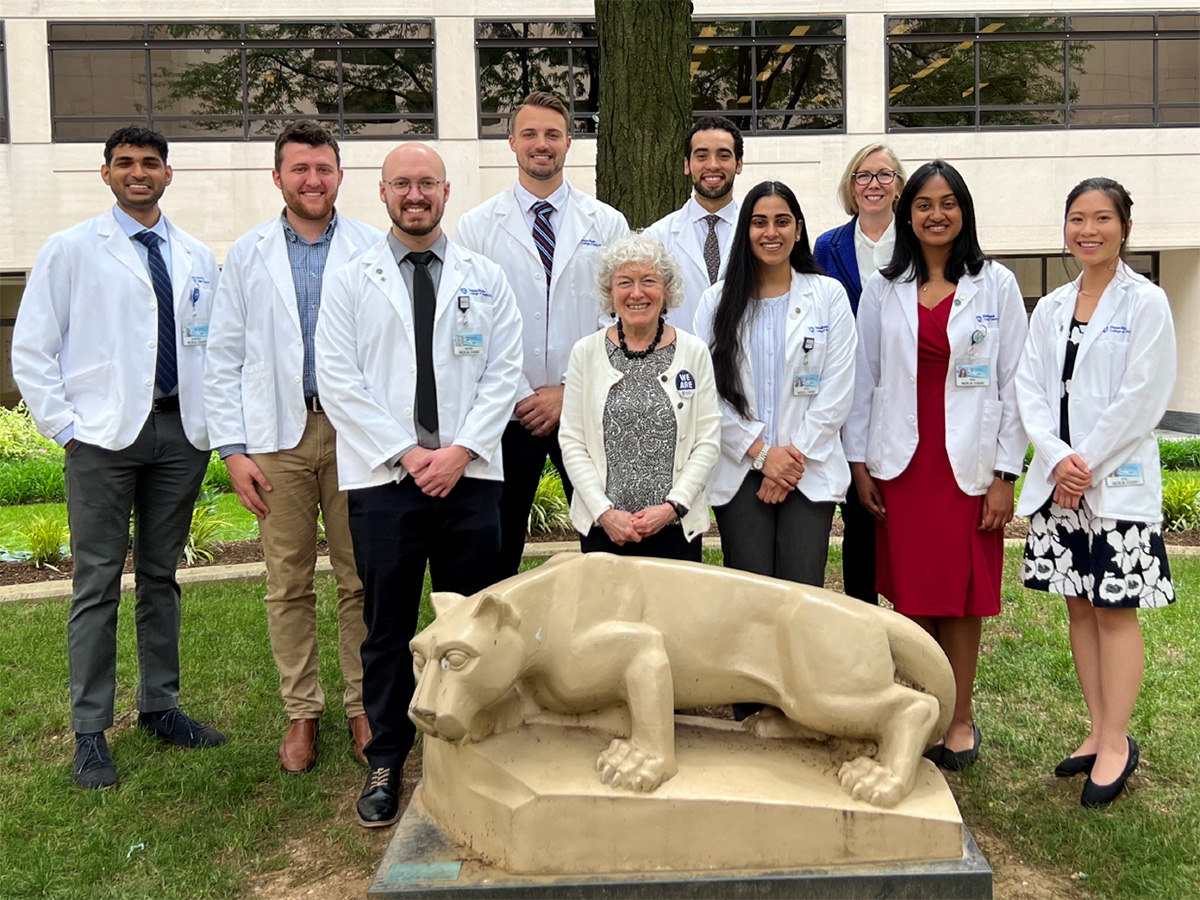Pathway Details
What are the advantages of choosing the 3+3 pathway?
This educational opportunity offers numerous advantages to students, including:
- The ability to complete medical school in three years instead of four.
- The opportunity to save one year of tuition, housing and fees.
- A continuum of undergraduate medical school and graduate residency training.
- Training in the Penn State Health Milton S. Hershey Medical Center Emergency Medicine Residency.
- Access to mentors in the Department of Emergency Medicine.
What is the timing of the pathway?
Students matriculate with the incoming medical school class in the summer. The 3+3 accelerated coursework begins during the first year of medical school, with an early introduction of clinical rotations.
In order to complete the graduation requirements in a compressed time frame, students in the 3+3 program do not get a six-week summer break after the first year. Students are enrolled in a combination of rotations during this time, and continue to work on their medical student research project.
Students participate in commencement from medical school in May of their third year. Participating 3+3 students begin three years of residency training in June, at what would be the start of their fourth year in a traditional MD pathway.
When am I expected to take USMLE Step 1 and USMLE Step 2 exams?
You will be expected to take and pass USMLE Step 1 and Step 2 prior to graduation, which is a Penn State College of Medicine requirement. You will have preparation time during your third year to successfully complete these requirements.
Will I need to enter the National Resident Matching Program?
Yes. The Penn State Health Emergency Medicine Residency can accept students through the match only. Therefore, you must enter the NRMP matching process.
Upon meeting the academic and professional standards for graduation from medical school, students are ranked to match into the Penn State Health residency program through the National Resident Matching Program®. Should students choose to rank Penn State, they would match into an Emergency Medicine residency position at Penn State Health .
Will my residency training be different?
Your three-year emergency medicine residency training at Penn State Health will not differ from that of a non-EM-APPS student. During medical school, you will have additional contact with the Department of Emergency Medicine, including opportunities to attend resident conferences and departmental events, as well as tailored rotations featuring structured shadowing with faculty and residents on call. You will build a relationship with faculty, residents and staff in the Department of Emergency Medicine, easing your transition to residency.
What if I change my mind and no longer want to pursue emergency medicine nor accelerate my training?
You would revert back to the traditional four-year program and enter the match as usual. Any scholarship granted will convert to a loan. Credits for partial courses may not carry over to the four-year program. For this reason, it’s important that you are certain about pursuing a career in emergency medicine before you apply to the pathway.
What if I do not make satisfactory progress in the pathway?
If you have academic difficulties or fail to progress as expected, you would revert to the traditional four-year program and enter the match as usual.
How much will tuition be?
If you complete the EM-APPS pathway as designed, you will receive a scholarship equal to one year of tuition. Thus, you’ll pay the equivalent of three years’ tuition, saving a full year of tuition. If you revert out of the EM-APPS pathway for any reason, any scholarship funds provided as a part of the pathway would convert to a loan.



